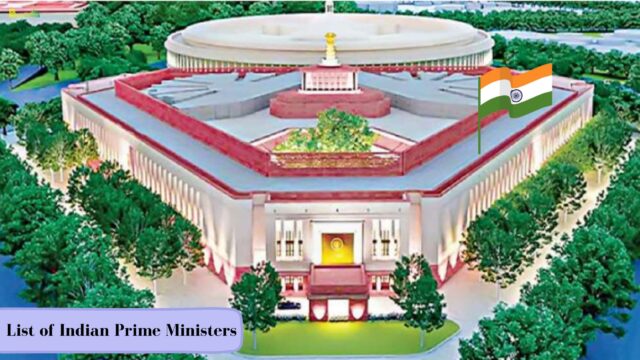India, often referred to as the world’s largest democracy, is a country known for its rich cultural, linguistic, and geographical diversity. This diversity is not only reflected in its landscapes and traditions but also its political leadership. The list of PM of India showcases a remarkable tapestry of leaders who have come from various regions, communities, and backgrounds. This article will explore the array of individuals (Prime Ministers of India) who have held the highest political office in India, highlighting how their backgrounds reflect the nation’s pluralistic ethos.
Jawaharlal Nehru: A Visionary Statesman
Jawaharlal Nehru, India’s first Prime Minister, was a visionary leader who was pivotal in shaping the nation’s identity. He hailed from the influential Nehru-Gandhi family but was deeply committed to India’s diversity. Nehru’s leadership was marked by his dedication to democratic values and secularism. He laid the foundation for India’s democratic institutions and set the stage for the diverse leadership that would follow.
Lal Bahadur Shastri: A Humble Servant of the People
Lal Bahadur Shastri, India’s second Prime Minister, was known for his simplicity and humility. He came from a humble background and was a champion of the rights of farmers and the marginalised. Shastri’s leadership during the 1965 Indo-Pak war demonstrated his commitment to safeguarding India’s territorial integrity and upholding the nation’s diverse values.
Indira Gandhi: The Iron Lady of India
Indira Gandhi, India’s first female Prime Minister, broke gender barriers in Indian politics. Her leadership was marked by a firm hand and decisive actions. She was instrumental in advancing India’s nuclear program and was significant in shaping the nation’s foreign policy. Her tenure reflects the diversity of India’s political landscape, where women leaders have made their mark.
Morarji Desai: A Statesman from Gujarat
Morarji Desai, India’s first non-Congress Prime Minister, hailed from Gujarat. His leadership showcased the nation’s political diversity by offering an alternative to Congress rule. Desai was known for his simplicity and his contributions to economic reforms. His tenure marked a significant shift in India’s political landscape.
Rajiv Gandhi: A Technocrat Leader
Rajiv Gandhi, India’s youngest Prime Minister at the time of his appointment, brought a technocratic perspective to leadership. He was an advocate for modernisation and played a key role in introducing computer technology to India. Gandhi’s leadership reflected India’s commitment to embracing technological advancements while maintaining its cultural diversity.
V.P. Singh: A Champion of Social Justice
V.P. Singh, who served as India’s Prime Minister in the late 1980s, was a strong advocate for social justice and affirmative action. His leadership aimed to address the concerns of marginalised communities. Singh’s tenure highlighted the importance of inclusivity in India’s diverse society.
P.V. Narasimha Rao: An Architect of Economic Reforms
P.V. Narasimha Rao, India’s first Prime Minister from southern India, is credited with initiating significant economic reforms. His leadership marked a departure from the traditional socialist policies of the past. Rao’s ability to bring about economic liberalisation reflected India’s openness to embracing change and diversity in economic thought.
Atal Bihari Vajpayee: A Poet and Statesman
Atal Bihari Vajpayee, a prominent leader from the Bharatiya Janata Party (BJP), served as India’s Prime Minister multiple times. He was known for his oratory skills and his role in shaping India’s foreign policy. Vajpayee’s leadership symbolised the diversity of India’s political spectrum, accommodating a range of ideologies.
Manmohan Singh: An Economist at the Helm
Manmohan Singh, a renowned economist, served as India’s Prime Minister from 2004 to 2014. He was instrumental in advancing economic reforms and liberalisation. Singh’s leadership demonstrated how individuals from diverse professional backgrounds could contribute to India’s governance.
Conclusion
The list of PM of India is a testament to the country’s pluralistic ethos and diverse political landscape. Each Prime Minister has left an indelible mark on the nation, contributing to its growth and development in their unique ways. As India continues its journey towards progress and prosperity, its diverse leadership will remain a source of strength and resilience.








